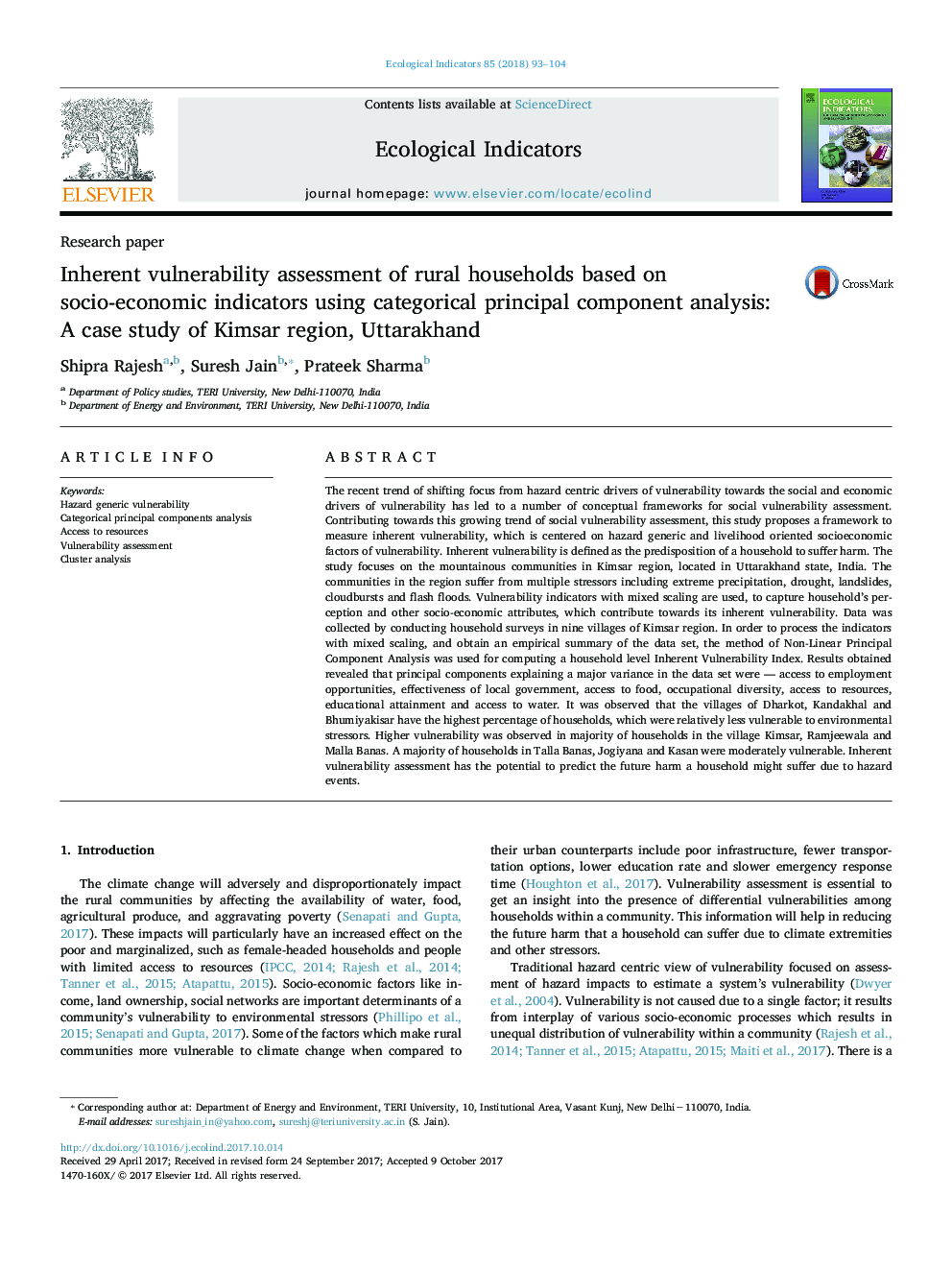| Article ID | Journal | Published Year | Pages | File Type |
|---|---|---|---|---|
| 5741296 | Ecological Indicators | 2018 | 12 Pages |
â¢Inherent vulnerability assessment focuses on local level vulnerability assessment for enhancing the adaptive capacity of the households.â¢IVI incorporates non-linear principal analysis technique for assessing mixed scale data set, in order to identify vulnerable households.â¢Large number of households in village Kimsar, Ramjeewala and Malla Banas were classified as very highly vulnerable.â¢In village Talla Banas majority of the households were moderately vulnerable.â¢Higher proportion of households in village Dharkot, Kandakhal and Bhumiyakisar had low vulnerability.
The recent trend of shifting focus from hazard centric drivers of vulnerability towards the social and economic drivers of vulnerability has led to a number of conceptual frameworks for social vulnerability assessment. Contributing towards this growing trend of social vulnerability assessment, this study proposes a framework to measure inherent vulnerability, which is centered on hazard generic and livelihood oriented socioeconomic factors of vulnerability. Inherent vulnerability is defined as the predisposition of a household to suffer harm. The study focuses on the mountainous communities in Kimsar region, located in Uttarakhand state, India. The communities in the region suffer from multiple stressors including extreme precipitation, drought, landslides, cloudbursts and flash floods. Vulnerability indicators with mixed scaling are used, to capture household's perception and other socio-economic attributes, which contribute towards its inherent vulnerability. Data was collected by conducting household surveys in nine villages of Kimsar region. In order to process the indicators with mixed scaling, and obtain an empirical summary of the data set, the method of Non-Linear Principal Component Analysis was used for computing a household level Inherent Vulnerability Index. Results obtained revealed that principal components explaining a major variance in the data set were - access to employment opportunities, effectiveness of local government, access to food, occupational diversity, access to resources, educational attainment and access to water. It was observed that the villages of Dharkot, Kandakhal and Bhumiyakisar have the highest percentage of households, which were relatively less vulnerable to environmental stressors. Higher vulnerability was observed in majority of households in the village Kimsar, Ramjeewala and Malla Banas. A majority of households in Talla Banas, Jogiyana and Kasan were moderately vulnerable. Inherent vulnerability assessment has the potential to predict the future harm a household might suffer due to hazard events.
Graphical abstractDownload high-res image (151KB)Download full-size image
